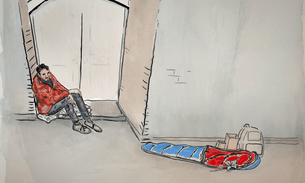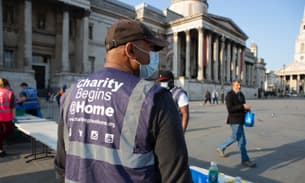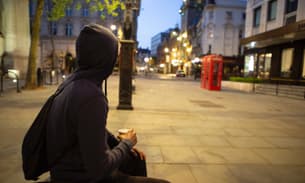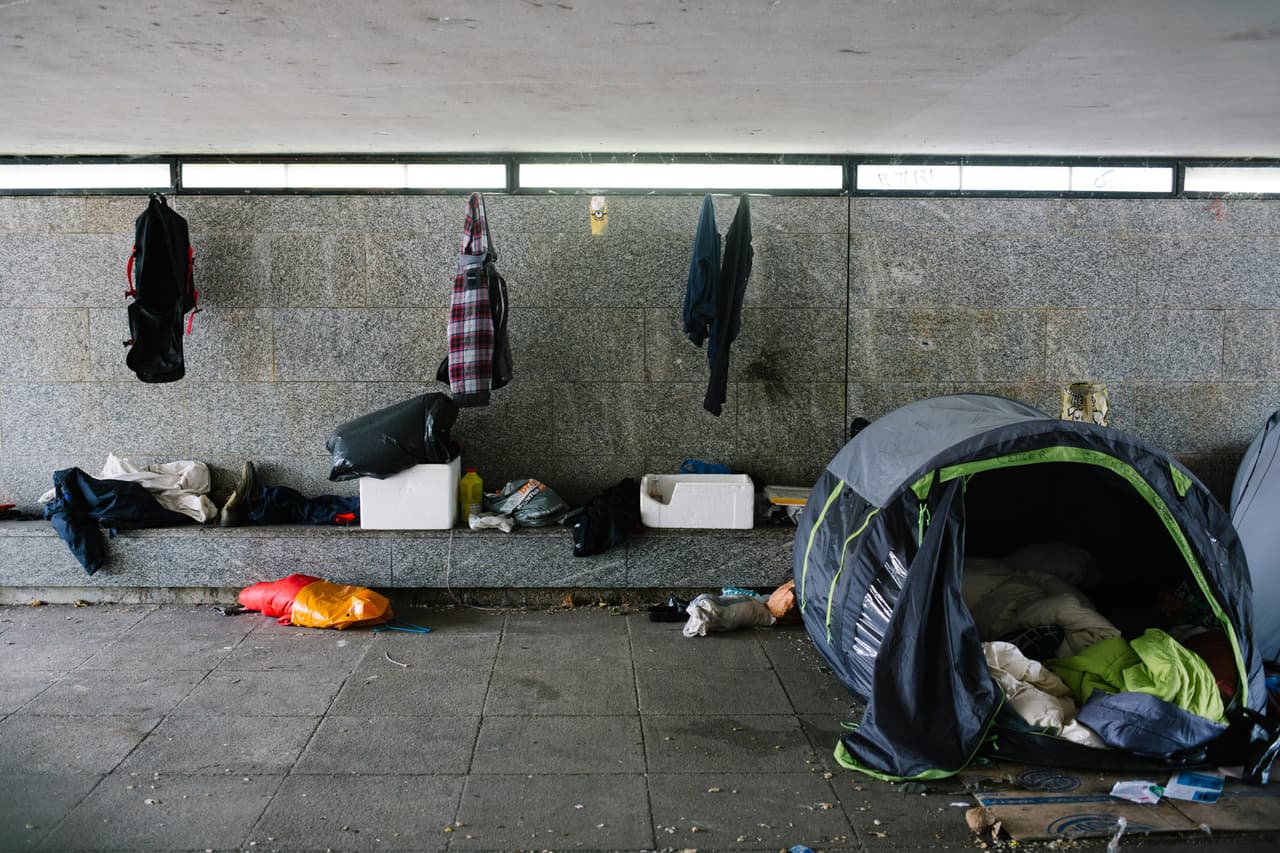
How Milton Keynes became the youth homelessness capital of the UK
This story was commissioned as part of the Bureau's Local Reporting Fund - a grant that supports the reporting of untold stories across the UK.
“In this place, the only thing that grows quickly and properly is darkness”.
Kane* is 22, and has been homeless for more than half a decade. He is describing the clusters of tents and areas of rough sleepers that congregate in the underpasses and subways of Milton Keynes - dubbed “tent city” in the UK press. Kane likens it to a jungle.
Five years ago his relationship with his family broke down and he left London, where he had grown up, for Milton Keynes. He had searched online where he might be able to get a bed in YMCA accommodation while he tried to get back on his feet.
After a brief stay at the YMCA, Kane’s shelter today is a tent in an underpass in the Buckinghamshire town, where according to charity Shelter, one in every 110 people is homeless.
He is one of an alarmingly large group of young people sleeping rough in Milton Keynes – a third of its rough sleeping population are under 25 while the national average is 8%. The 50-year-old town has the second highest number of 18 to 25-year-olds living on the street in the country. The only local authority with a higher number of young rough sleepers is Hillingdon, whose figures are distorted by the large influx of people at Heathrow airport.
The irony is that Milton Keynes was built in the 1960s as a way of alleviating London’s post-war housing crisis. It also has money to spend - grants from central government to tackle homelessness, as well as a council that has substantial cash reserves unlike several other local authorities. Yet the council is finding it so hard to find affordable or appropriate accommodation that some young homeless people are advised to move to Birmingham.
The government’s figures on rough sleepers in Milton Keynes says none are under 18 years old, but the Bureau met some who were clearly younger. Just 17, James* – who describes himself as “Milton Keynes born and bred” – has been homeless for a year. His childhood was not easy: he was a young carer for his mother from about the age of 10 and remembers having four or five social workers through the years.
He ran away from home after the relationship with his mother became abusive. “It got quite extreme and scary at home,” he explains after picking up some sandwiches from the evening’s volunteers running the food handout outside Iceland in the Food Centre, the largest shopping centre in Milton Keynes.
All photography by Alex Sturrock in Milton Keynes, 2018, unless stated
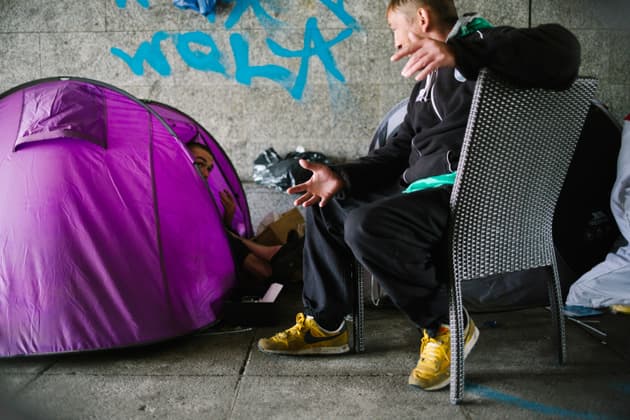
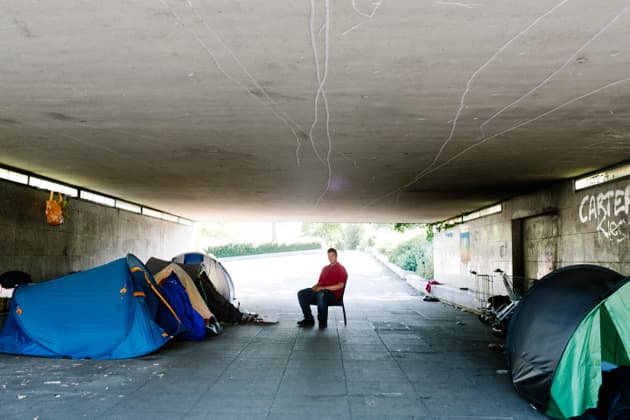
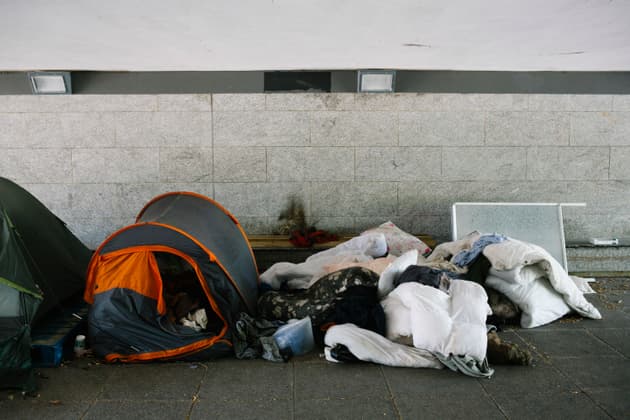
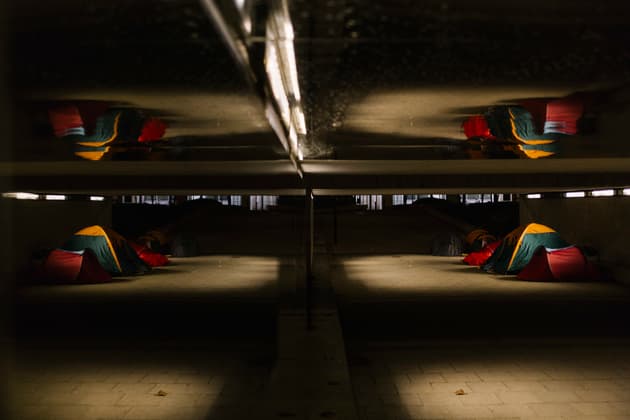
James spent nights sofa-surfing at friends’ houses when he could. Otherwise, he slept on a camping mat on the streets until he found a temporary place in a local charity-run hostel. He managed to keep his job at a nearby fast food restaurant for a few months after becoming homeless – but things steadily grew difficult.
He is no longer able to work because of mental health problems. “At Christmas, I went downhill, things spiralled and I was drinking a lot,” he explains. “It brought me to a level where I could sleep. I’d fall asleep with a beer, wake up with a beer. It was terrible.”
James has managed to stop drinking now. He is hopeful. He expects to be able to find a room he can rent with housing benefit once he turns 18. “I’m going to try to get a place in Tinkers Bridge [an outer area of Milton Keynes] because I know it’s quite cheap,” he says. “I think it’s about £75 a week for a room, which is pretty good.”
Also waiting for food handouts is 21-year-old Daisy*. When we meet she is cradling her one-year-old son in a queue for soup outside the Jobcentre. The street lamps above flicker on and off as automated food delivery robots buzz along the pavements taking hot meals from local restaurants to nearby homes that can afford such a luxury. She watches on as volunteers unpack a car boot of free food prepared by a local church congregation for those waiting in line.
One volunteer walks over to warmly greet Daisy and her son, who is now cooing enthusiastically, unaware of the hardship his mother is confronting. It is clear this family are no strangers to this emergency food distribution point.
“Everyone who helps out here knows the little man,” Daisy says. “I’ve been coming since before I was pregnant, they’ve watched him grow.”
Daisy became homeless two years ago after her relationship with her adoptive family broke down. Since then, the food bank has become a lifeline, not only providing food but also clothing and community.
The young family recently moved from emergency accommodation into a council flat behind The Point, a local landmark and entertainment centre that is due for demolition and redevelopment. The Point is overshadowed by the Xscape – a bigger, more modern cinema, entertainment and food complex that has taken many of the Point’s customers, and which ironically looks like an enormous tent.
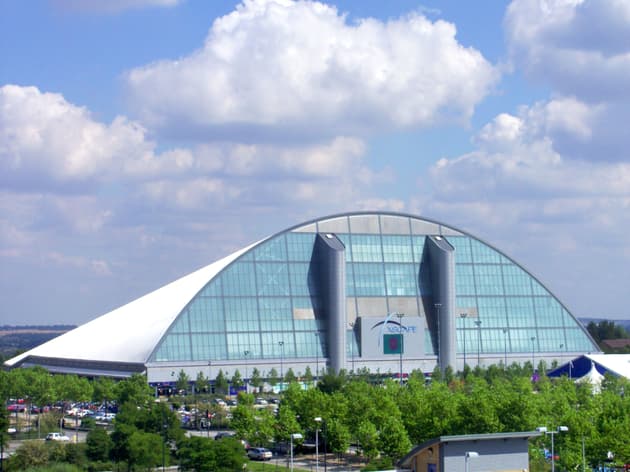 The Xscape building, Milton Keynes
Photo: Alamy
The Xscape building, Milton Keynes
Photo: Alamy
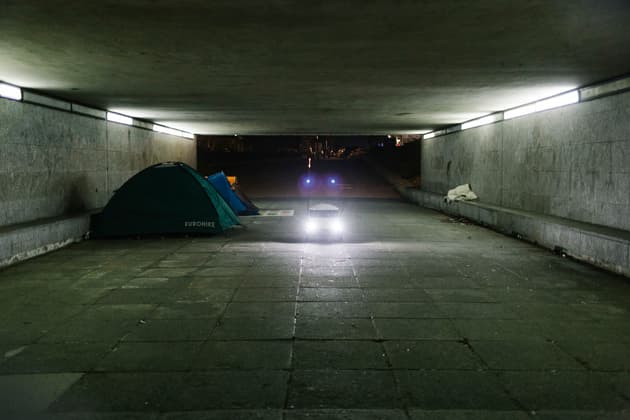 A food delivery robot passes by homeless tents
A food delivery robot passes by homeless tents
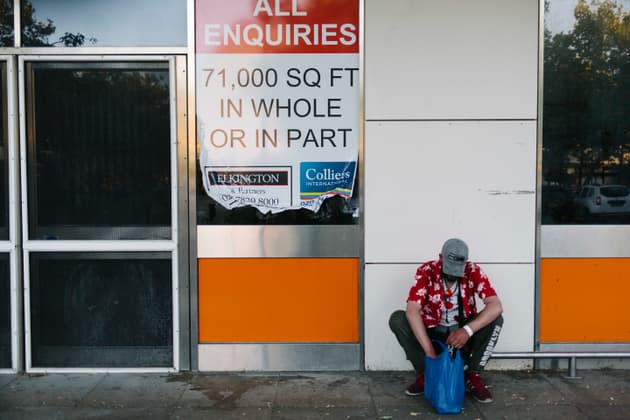
Daisy still faces extreme hardship. She spent much of the little money she had making their new home habitable, paying for repairs after the toilet from the flat above leaked and the boiler broke. The benefits she receives barely cover the utility bills, but she remains optimistic about the future. “We’re getting there slowly,” she says.
The paradox is that Milton Keynes is performing well economically in many areas. It has the fourth highest wages of all British cities, with average weekly earnings of £619, and the third highest number of businesses per population, according to the Centre for Cities, a think-tank that specialises in monitoring UK cities.
Milton Keynes is ready for new business. Next to where people sleep rough in tents and accept coins on the streets, there is an estimated one million square foot of empty or available commercial space for companies hoping to move to the area. The town is also leading the way in self-driving vehicles: Milton Keynes is likely to be the first place in Britain to introduce a technology of this kind. A fleet of 30 driverless “pods” now in operation as part of a trial.
The commercial vibrancy contrasts bluntly with the experiences of those people living in hardship. The town is polarised with clear pockets of poverty and a stark inequality gap. Milton Keynes has the 13th highest level of inequality in the whole of the UK, according to the Centre for Cities.
It is one of the most unaffordable UK towns in terms of house prices and it is not unusual for private tenants to pay double the rent of council occupants in similar neighbouring properties. Milton Keynes has the highest number of council homes sold to private landlords under right to buy than any other UK town at 71% – compared with a national average rate of 40%.
The town’s welfare bill has also increased by 45 per cent since 2010, representing a bigger jump than anywhere else in the country, according to the Centre for Cities. In 2016-17, Milton Keynes Council spent a total of £7.5m on temporary accommodation for homeless people.
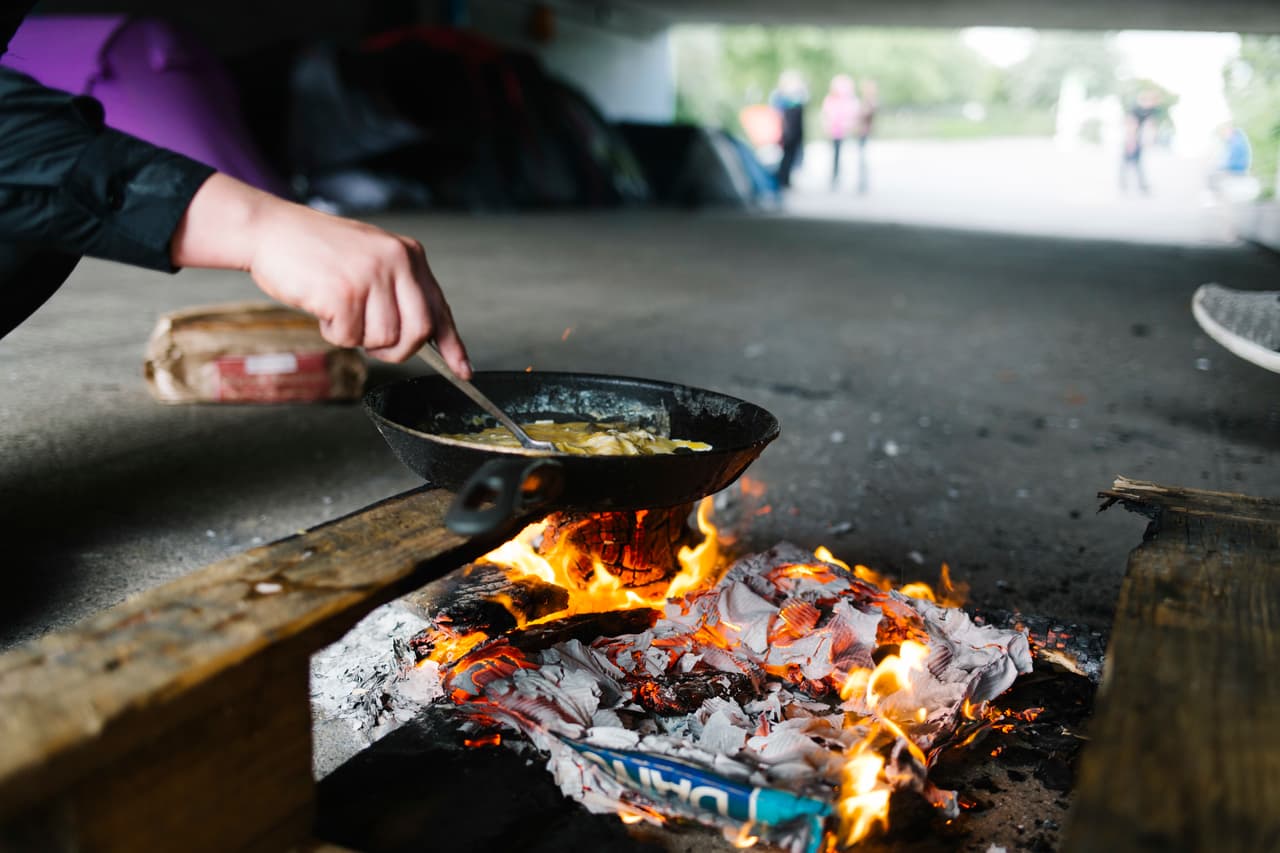
Why are there so many young people living on the streets of Milton Keynes? Speaking to young homeless people, no one single factor emerged.
Jason, 19, believes complex, unresolved mental health problems led him to become homeless. He remembers having counselling in primary school but says it stopped abruptly on entering secondary education.
His life began to unravel from there. He eventually left home a year ago when his relationship with his mother disintegrated, and has been homeless since.
Jason believes there is not enough support for young people who are sleeping rough and says he feels left in what he calls “the dead zone”. He is now couch surfing with friends who have a room at the YMCA.
Meanwhile, Jamie*, 21, has been homeless on and off – he says more on than off – since he was 15. He lived in a Volkswagen Polo, which he parked in a residential garage block, for 18 months before being forced back onto the streets. His problems began when he started smoking spice (synthetic cannabis) seven years ago, although he says he is not using drugs anymore.
“I wasn’t allowed in school for more than two days a week, it was bad because I was smoking spice,” he explains while wrapped in a sleeping bag at the foot of the Xscape on one particularly bitter night. “Back then I could walk into our local shop and just buy it over the counter like sweets. [Sales have now been banned]. If I put you on the phone to my mum now she would say, ‘It was drugs that ruined Jamie’s life’. It’s like a really bad dream and you’re trying to wake yourself up.”
Paul, 21, has been sleeping in a tent in an underpass for three months and sees his day-to-day reality as a complex and unrelenting vicious circle. He is trying to find work to save enough money for a room but it is not as straightforward – especially psychologically – as it might first appear. “It’s difficult sleeping out here,” he says. “It would be hard to go back to doing something normal.”
The desire for a “normal life” is consistent among the Milton Keynes’s young people we spoke to who are sleeping rough. Daniel *, a 24-year-old who became homeless when his roommate lost his job and could no longer afford to pay his share of the rent, prays every night. “I pray that my life will get better, I pray to get back into work, I pray to reunite with my friends and family,” he says passionately. “I want to get myself a job, settle down and have a family. I want to live the life that everyone else is living.”
Faith may provide comfort to some but practical support is needed to lift young people out of homelessness. The inequality in Milton Keynes threatens the future of the area’s young people, and undermines the vision behind the creation of the city in the first place: not just a town of extra housing, but a connected grid of estates and green spaces, that worked for both cars and pedestrians.
The council says that tackling homelessness is a priority and Labour councillor for housing Nigel Long says he aims to end street homelessness by 2020. The council certainly isn’t facing the financial constraints affecting other authorities - it has cash reserves of over £200m.
It also recently raised council tax by the maximum possible amount of 5.99%, and will receive £360,000 from central government to provide immediate support and accommodation to people who are sleeping rough. This is in addition to an initial £239,000 awarded in March, and is part of the government’s £100m plan to end rough sleeping by 2027.
Long says that since March the local authority adopted a new approach where - in principle - people who are homeless should be put into accommodation immediately whatever their needs.
While there is extra funding to tackle homelessness in the city, several homeless people said that Milton Keynes Council is trying to move them onto other areas. A number of people sleeping rough say they have been advised by the council to move to Birmingham where they would stand a better chance of finding a place to stay - despite the fact that rough sleeping in the West Midlands city has increased fivefold since 2010. The council says it is possible that staff have asked people to consider different areas when it agrees personal housing plans with them as part of its “prevention work”.
Daniel is among those to have been advised to take the 70-mile journey north. “I think there’s a new development in Birmingham and the council can get me a place there,” he says. “Maybe it might give us a roof over our heads but what they’re not thinking about is whether we can get work there or our wellbeing. It’s just a temporary solution.”
A council spokesman says some single, young men, who were not classed as a priority or vulnerable, have been offered such advice through the council’s Housing Options team. In such cases, if nothing local is affordable, and rehousing with family isn’t possible, the officers look further afield. Affordable accommodation in other areas is considered and “single people have the choice to take up the accommodation or not”. Milton Keynes Council also says it employs a specialist organisation, Prime Midlands, to help young people with drug and alcohol problems and offer permanent rehousing in Birmingham.
Make change possible
Investigative journalism is vital for democracy. Help us to expose injustice and spark change
Click here to support us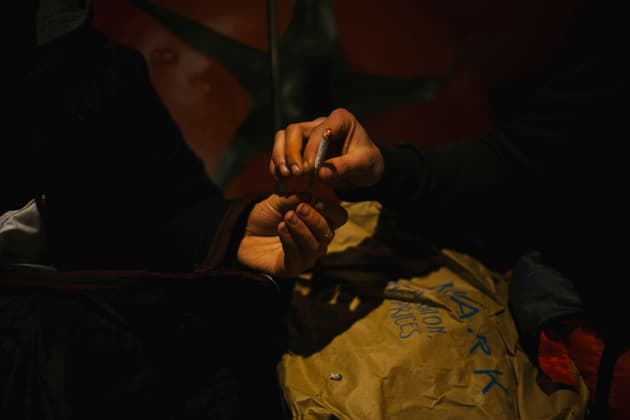
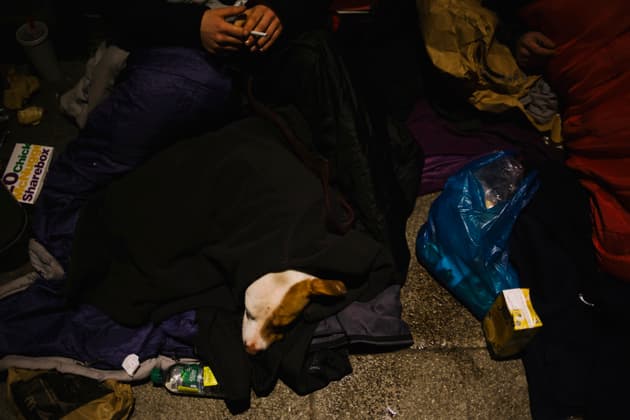
For now, however, Milton Keynes undergoes a metamorphosis each day as the sun sets and the hundreds of shoppers leave the mall for the day. They are replaced by rough sleepers, walking the streets wrapped in their sleeping bags, some followed by their dogs. In the underpasses groups of people make fires to cook the little food they managed to get hold of that day. Food left outside tents is often found by rats before it can be eaten.
Kane says the town is “cursed”. The hardship and the isolated existence here makes him feel “empty and alone”. “I’m close to nobody here,” he explains. “Except me and my legs. These are the closest things to me.”
But he is still hopeful that this will all be over and he can move on to better things. He plans to find work in a warehouse and has signed up to employment agencies – without declaring he is homeless for fear of rejection. When he makes enough money he will go London. That, he hopes, is his way out. “Step by step,” Kane says. “I have to go back. I will.”
* names have been changed
All photography by Alex Sturrock in Milton Keynes, 2018, unless stated
The Bureau newsletter
Subscribe to the Bureau newsletter, and hear when our next story breaks.


